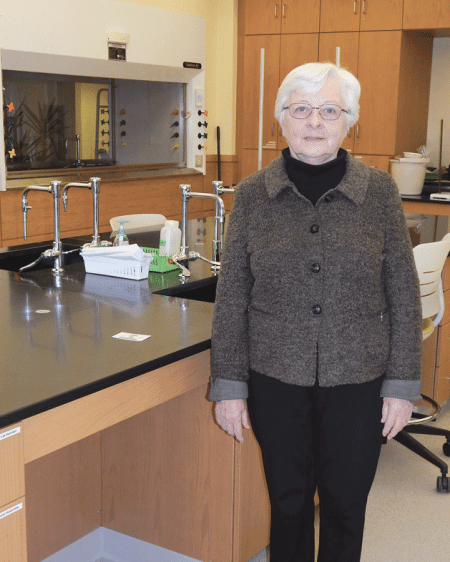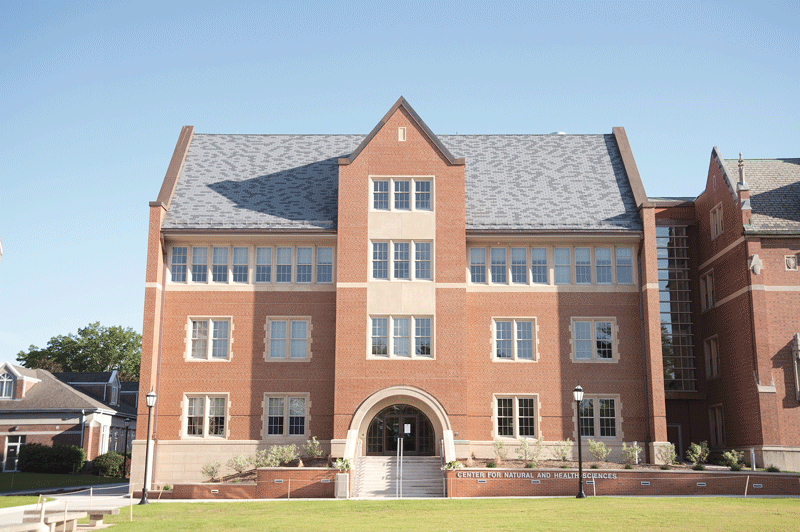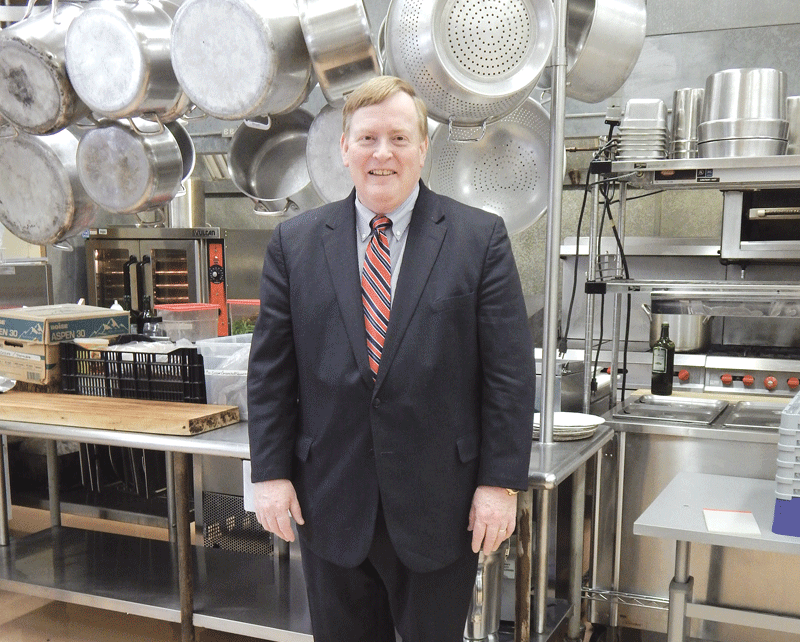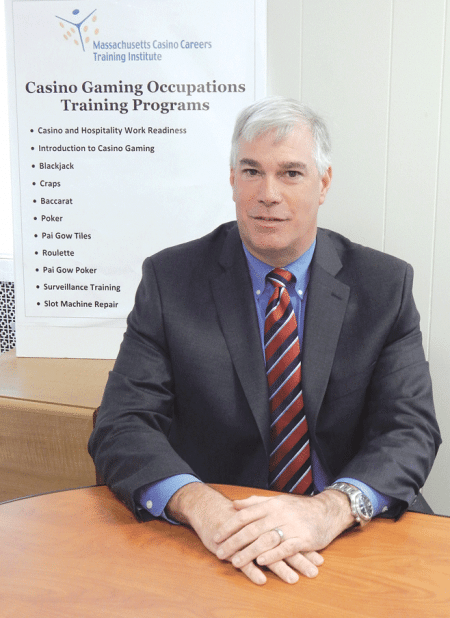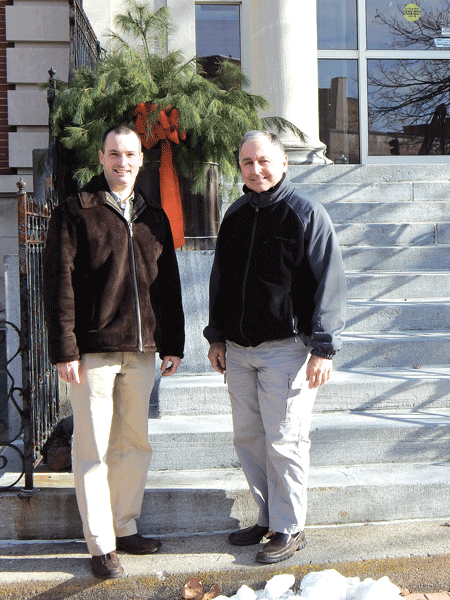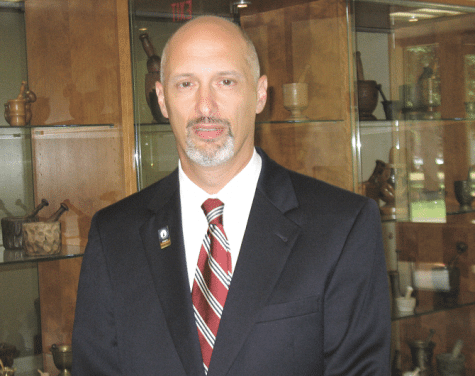HAMPDEN COUNTY
AGAWAM
123 Adams St.
Agawam, MA 01001
Amount: $160,797
Buyer: US Bank
Seller: Elizabeth A. Harrington
Date: 12/22/15
137 Colemore St.
Agawam, MA 01030
Amount: $180,000
Buyer: Rebecca Stone
Seller: Richard J. Marcheselli
Date: 12/18/15
262 Colemore St.
Agawam, MA 01030
Amount: $172,283
Buyer: US Bank
Seller: Lyli E. Stacy
Date: 12/22/15
476 Corey St.
Agawam, MA 01001
Amount: $225,000
Buyer: Jason A. Larocque
Seller: Andrea Machia
Date: 12/18/15
108 Hastings St.
Agawam, MA 01030
Amount: $167,000
Buyer: Yuriy Vovk
Seller: Kenneth L. Vermes
Date: 12/14/15
66 Liberty St.
Agawam, MA 01030
Amount: $125,000
Buyer: Double D. Investments LLC
Seller: James H. Powell
Date: 12/21/15
122 Monroe St.
Agawam, MA 01001
Amount: $272,500
Seller: Todd V. Ruby
Date: 12/11/15
1056 North West St.
Agawam, MA 01030
Amount: $225,000
Buyer: Casey S. Fuller
Seller: Judy A. Koralik
Date: 12/22/15
644 North St.
Agawam, MA 01030
Amount: $184,500
Buyer: Ryan Fields
Seller: Andrew M. Morrison
Date: 12/18/15
309 Poplar St.
Agawam, MA 01030
Amount: $235,000
Buyer: Andrey Nemchinsky
Seller: Joseph M. Parslow
Date: 12/17/15
83 Valley Brook Road
Agawam, MA 01030
Amount: $197,412
Buyer: FNMA
Seller: Todd L. Bousquet
Date: 12/23/15
BLANDFORD
27 South St.
Blandford, MA 01008
Amount: $293,000
Buyer: Deutsche Bank
Seller: Joseph Domingos
Date: 12/11/15
BRIMFIELD
1237 Dunhamtown Brimfield Road
Brimfield, MA 01010
Amount: $273,000
Buyer: Bernard L. Parker
Seller: Robert R. Runge
Date: 12/15/15
21 Little Alum Road
Brimfield, MA 01010
Amount: $220,000
Buyer: Ryan D. Metterville
Seller: Joseph M. Beer
Date: 12/21/15
75 Monson Road
Brimfield, MA 01010
Amount: $242,000
Buyer: Sarah J. Buzanowski
Seller: Jennifer Elmore
Date: 12/17/15
CHESTER
66 Lyon Hill Road
Chester, MA 01011
Amount: $255,000
Buyer: Adrianne C. Johnson
Seller: Thomas L. Brisson
Date: 12/22/15
276 Skyline Trail
Chester, MA 01011
Amount: $235,000
Buyer: Ryan P. Greener
Seller: Albert H. Reale
Date: 12/11/15
CHICOPEE
2 Access Road
Chicopee, MA 01020
Amount: $120,771
Buyer: USA VA
Seller: Ricky E. Weaver
Date: 12/16/15
70 Arlmont St.
Chicopee, MA 01013
Amount: $115,000
Buyer: David Deslauriers
Seller: Barbara A. Deslauriers
Date: 12/17/15
84 Bell St.
Chicopee, MA 01013
Amount: $172,500
Buyer: Eric P. Alicea
Seller: Ronald Gagne
Date: 12/18/15
63 Bemis Ave.
Chicopee, MA 01020
Amount: $130,000
Buyer: Maryjane Kopie
Seller: Sara L. Raymond
Date: 12/21/15
16 Bolduc Lane
Chicopee, MA 01013
Amount: $150,000
Buyer: Matthew 1128 Church Of God
Seller: Chrissys Corner LLC
Date: 12/16/15
36 Catherine St.
Chicopee, MA 01013
Amount: $119,273
Buyer: US Bank
Seller: Kathleen E. Moore
Date: 12/22/15
25 Gelinas Dr.
Chicopee, MA 01020
Amount: $181,500
Buyer: Mary L. Laprade
Seller: Clayton J. Tomlinson
Date: 12/22/15
56 Longwood Dr.
Chicopee, MA 01020
Amount: $215,000
Buyer: Christopher D. Sawa
Seller: Magdalene N. Eboso
Date: 12/17/15
107 Mandalay Road
Chicopee, MA 01020
Amount: $160,000
Buyer: Kris C. Wojtowicz
Seller: Tran, Oanh N., (Estate)
Date: 12/18/15
151 Mayflower Ave.
Chicopee, MA 01020
Amount: $296,000
Buyer: David Lemieux
Seller: Raymond P. Authier
Date: 12/22/15
505 Memorial Dr.
Chicopee, MA 01020
Amount: $252,000
Buyer: Synergic Solutions Inc.
Seller: Jayanth Pasupleti
Date: 12/21/15
202 Old Lyman Road
Chicopee, MA 01020
Amount: $126,000
Buyer: DGL Properties LLC
Seller: Vevier, Robert W., (Estate)
Date: 12/16/15
7 Tardy Road
Chicopee, MA 01020
Amount: $250,500
Buyer: David A. Bucalo
Seller: Carol A. Gomes
Date: 12/11/15
131 Ward St.
Chicopee, MA 01020
Amount: $170,000
Buyer: Jesus A. Andino
Seller: Jose Goncalves
Date: 12/11/15
49 Washington St.
Chicopee, MA 01020
Amount: $179,000
Buyer: Nicole M. Beaupre
Seller: Robert E. McQueen
Date: 12/11/15
EAST LONGMEADOW
Canterbury Circle
East Longmeadow, MA 01028
Amount: $115,000
Buyer: Priscilla R. Diaz
Seller: Kevin P. Asher
Date: 12/11/15
11 Dawes St.
East Longmeadow, MA 01028
Amount: $217,500
Buyer: Sammy Guilbe
Seller: Robert A. Gagne
Date: 12/18/15
106 Hampden Road
East Longmeadow, MA 01028
Amount: $180,000
Buyer: Mitchell R. Galaszka
Seller: Leon Jangrow
Date: 12/21/15
42 Holland Dr.
East Longmeadow, MA 01028
Amount: $165,000
Buyer: Gino Trolio
Seller: Mya Realty LLC
Date: 12/21/15
150 Kibbe Road
East Longmeadow, MA 01028
Amount: $399,900
Buyer: Carla Lomangino
Seller: Laura J. Rollins
Date: 12/14/15
89 Mapleshade Ave.
East Longmeadow, MA 01028
Amount: $279,000
Buyer: Kerry L. Valley
Seller: Emme G. Kuhn
Date: 12/21/15
241 Parker St.
East Longmeadow, MA 01028
Amount: $305,000
Buyer: Christine Sousa
Seller: Mary A. Thibault
Date: 12/10/15
42 Pease Road
East Longmeadow, MA 01028
Amount: $213,500
Buyer: Laura Stevens
Seller: FNMA
Date: 12/11/15
Peachtree Road
East Longmeadow, MA 01028
Amount: $150,000
Buyer: Joseph M. Carlos
Seller: Cabot Real Estate LLC
Date: 12/18/15
45 Sturbridge Lane
East Longmeadow, MA 01028
Amount: $125,000
Buyer: Robert-Thomas Construction LLC
Seller: Danny S. Larochelle
Date: 12/18/15
4 Veranda Ave.
East Longmeadow, MA 01028
Amount: $285,000
Buyer: Saad Abduljabbar
Seller: Robert J. Villeneuve
Date: 12/18/15
HAMPDEN
210 Allen St.
Hampden, MA 01036
Amount: $1,100,000
Buyer: New Life International
Seller: Bethlehem Baptist Church
Date: 12/18/15
216 Allen St.
Hampden, MA 01036
Amount: $1,100,000
Buyer: New Life International
Seller: Bethlehem Baptist Church
Date: 12/18/15
62 Mountain Road
Hampden, MA 01036
Amount: $306,000
Buyer: Derek M. Gray
Seller: Timothy R. Connors
Date: 12/16/15
47 Old Coach Road
Hampden, MA 01036
Amount: $220,000
Buyer: Random Properties Acquisition Corp. 3
Seller: Clifford E. Keeney
Date: 12/17/15
113 Somers Road
Hampden, MA 01036
Amount: $212,500
Buyer: Donny Adorno
Seller: Derek M. Gray
Date: 12/16/15
HOLLAND
78 Hisgen Road
Holland, MA 01521
Amount: $393,000
Buyer: Kevin P. Koslowski
Seller: Gerald J. Germaine
Date: 12/17/15
22 Union Road
Holland, MA 01521
Amount: $190,000
Buyer: Robert S. Sheldon
Seller: Ryan J. Mulcahy
Date: 12/15/15
88 Vinton Road
Holland, MA 01521
Amount: $171,500
Buyer: Cassie Leslie
Seller: Darell L. Mitchell
Date: 12/11/15
42 Wales Road
Holland, MA 01521
Amount: $245,000
Buyer: Carolyn Morrison
Seller: Howard A. Fife
Date: 12/21/15
HOLYOKE
11 Anderson Ave.
Holyoke, MA 01040
Amount: $180,000
Buyer: Rachel M. Davini
Seller: Shanahan, Kara E., (Estate)
Date: 12/21/15
357 Apremont Hwy.
Holyoke, MA 01040
Amount: $130,000
Buyer: Wilmington Savings Fund Society
Seller: Jose A. Hernandez
Date: 12/16/15
73 Carlton St.
Holyoke, MA 01040
Amount: $135,000
Buyer: Alexander A. Wanczyk
Seller: Karen D. Warren
Date: 12/11/15
133 Central Park Dr.
Holyoke, MA 01040
Amount: $306,000
Buyer: James O’Brien
Seller: Lawrence V. Lajoie
Date: 12/18/15
80-94 Commercial St.
Holyoke, MA 01040
Amount: $400,000
Buyer: Gandara Mental Health Center
Seller: 80 Commercial Street LLC
Date: 12/11/15
17 Hickory St.
Holyoke, MA 01040
Amount: $185,500
Buyer: David M. Picchi
Seller: Nora Mackay
Date: 12/15/15
23 Homestead Ave.
Holyoke, MA 01040
Amount: $148,000
Buyer: Elizabeth J. Scheurer
Seller: John H. Chwalek
Date: 12/15/15
233 Huron Ave.
Holyoke, MA 01040
Amount: $205,000
Buyer: John E. McMahon
Seller: James O’Brien
Date: 12/11/15
131-133 Locust St.
Holyoke, MA 01040
Amount: $125,000
Buyer: Best4u RT
Seller: Lester L. Zyla
Date: 12/11/15
107 Meadowbrook Road
Holyoke, MA 01040
Amount: $160,000
Buyer: Linda M. Beauregard
Seller: Richard D. Chartier
Date: 12/17/15
53 Mueller Road
Holyoke, MA 01040
Amount: $213,000
Buyer: Dana B. Potter
Seller: Zachary R. Vozella
Date: 12/10/15
244 Oak St.
Holyoke, MA 01040
Amount: $145,000
Buyer: Sarah B. Albright
Seller: Scott Tundermann
Date: 12/15/15
29 Orchard St.
Holyoke, MA 01040
Amount: $188,000
Buyer: Patrick O. Britton
Seller: Matthew J. Craven
Date: 12/14/15
11 Ross Road
Holyoke, MA 01040
Amount: $206,000
Buyer: James R. Murphy
Seller: David P. Peloquin
Date: 12/21/15
25 Stanford St.
Holyoke, MA 01040
Amount: $229,950
Buyer: Wells Fargo Bank
Seller: David J. Fitz
Date: 12/23/15
LONGMEADOW
215 Ellington Road
Longmeadow, MA 01106
Amount: $655,000
Buyer: Michael D. Caban
Seller: James Fitzpatrick
Date: 12/10/15
64 Franklin Road
Longmeadow, MA 01106
Amount: $195,500
Buyer: Ehdaa A. Tahoun
Seller: Katherine T. Duclos
Date: 12/18/15
33 Harwich Road
Longmeadow, MA 01106
Amount: $385,000
Buyer: Christopher R. Glass
Seller: Lloyd Mendes
Date: 12/15/15
117 Shaker Road
Longmeadow, MA 01106
Amount: $374,900
Buyer: Christopher J. Morgan
Seller: Charles N. Brinkmann
Date: 12/15/15
240 Shaker Road
Longmeadow, MA 01106
Amount: $850,000
Buyer: Cary D. Rubman
Seller: Priscilla R. Diaz
Date: 12/11/15
LUDLOW
3 Auburn St.
Ludlow, MA 01056
Amount: $315,000
Buyer: Bank New York Mellon
Seller: Laura Green
Date: 12/24/15
77 Elizabeth Dr.
Ludlow, MA 01056
Amount: $371,500
Buyer: Christopher C. Arsenault
Seller: Antonio J. Bastos
Date: 12/21/15
N/A
Ludlow, MA 01056
Amount: $121,777
Buyer: Cheryl A. Couture
Seller: USA HUD
Date: 12/11/15
95 Oakridge St.
Ludlow, MA 01056
Amount: $205,000
Buyer: Evan W. Giana
Seller: Brett D. Bernardo
Date: 12/10/15
146 Piney Lane
Ludlow, MA 01056
Amount: $126,000
Buyer: PNC Bank
Seller: Jamison A. Bolduc
Date: 12/17/15
63 Pond St.
Ludlow, MA 01056
Amount: $159,900
Buyer: Alicia M. Moorhouse
Seller: Anne Norton
Date: 12/11/15
163 Winsor St.
Ludlow, MA 01056
Amount: $175,000
Buyer: Jill M. Eskett
Seller: Diana M. Pires-Murphy
Date: 12/21/15
MONSON
400 Lower Hampden Road
Monson, MA 01057
Amount: $250,000
Buyer: Ronald J. Gagne
Seller: Robert G. Horacek
Date: 12/18/15
11 Pine St.
Monson, MA 01057
Amount: $140,000
Buyer: Thomas C. Brooks
Seller: Hashim, Amene, (Estate)
Date: 12/18/15
PALMER
46-48 Converse St.
Palmer, MA 01069
Amount: $135,000
Buyer: Joseph J. Skowyra
Seller: Lorraine T. Samson
Date: 12/11/15
14 Memory Lane
Palmer, MA 01069
Amount: $214,000
Buyer: Howard A. Fife
Seller: Kyle M. Converse
Date: 12/21/15
166 Peterson Road
Palmer, MA 01069
Amount: $432,000
Buyer: Timothy Bedard
Seller: Carolyn Morrison
Date: 12/21/15
3051 Pine St.
Palmer, MA 01069
Amount: $140,000
Buyer: Wells Fargo Bank
Seller: Michael B. Atwood
Date: 12/24/15
14 State St.
Palmer, MA 01069
Amount: $136,450
Buyer: US Bank
Seller: Laura A. Hebert
Date: 12/24/15
SOUTHWICK
164 Berkshire Ave.
Southwick, MA 01077
Amount: $163,000
Buyer: Paul R. Vezina
Seller: Richard Saracin
Date: 12/11/15
27 Buckingham Dr.
Southwick, MA 01077
Amount: $175,900
Buyer: Eugene Petit
Seller: Christine A. Longo
Date: 12/14/15
36 Davis Road
Southwick, MA 01077
Amount: $149,000
Buyer: Brianna Lovechio-Rua
Seller: FNMA
Date: 12/11/15
11 Foster Road
Southwick, MA 01077
Amount: $249,500
Buyer: Brian J. Morrissey
Seller: Ricky L. Disanto
Date: 12/21/15
139 Fred Jackson Road
Southwick, MA 01077
Amount: $323,000
Buyer: Renee L. Steese
Seller: Marc A. Wrobleski
Date: 12/16/15
SPRINGFIELD
27-29 Allison Lane
Springfield, MA 01129
Amount: $117,000
Buyer: Gandara Mental Health Center
Seller: James A. Pafumi
Date: 12/16/15
114 Arcadia Blvd.
Springfield, MA 01118
Amount: $275,000
Buyer: Melinda Barry
Seller: Eleanor Vanhorne
Date: 12/18/15
208 Belmont Ave.
Springfield, MA 01108
Amount: $135,000
Buyer: Tara M. Parrish
Seller: Amber Soto
Date: 12/11/15
34 Boyd St.
Springfield, MA 01108
Amount: $165,000
Buyer: Abdou Mourad
Seller: Joseph V. Costa
Date: 12/14/15
830-832 Carew St.
Springfield, MA 01104
Amount: $160,000
Buyer: Jonathan Rodriguez
Seller: Itevaldo Cunha
Date: 12/15/15
175 Chalmers St.
Springfield, MA 01118
Amount: $180,000
Buyer: Vilenti D. Tulloch
Seller: Frank Garaughty
Date: 12/18/15
184 Ellsworth Ave.
Springfield, MA 01118
Amount: $216,000
Buyer: Dimitrius Fox
Seller: James Manferdini
Date: 12/15/15
81 Fair Oak Road
Springfield, MA 01128
Amount: $125,000
Buyer: FNMA
Seller: Joyce G. Braithwaite
Date: 12/21/15
132 Garland St.
Springfield, MA 01118
Amount: $124,500
Buyer: Amanda C. Ledwith
Seller: Mary L. Koch
Date: 12/21/15
282 Hartwick St.
Springfield, MA 01108
Amount: $170,000
Buyer: Brenda A. Flores-Carrion
Seller: Gregory A. Granger
Date: 12/10/15
356 Island Pond Road
Springfield, MA 01118
Amount: $118,600
Buyer: Thomas Murphy
Seller: Kathryn Hewitt
Date: 12/18/15
77 Jerilis Dr.
Springfield, MA 01119
Amount: $125,000
Buyer: Marialie Maldonado
Seller: Raymond J. Larose
Date: 12/21/15
18-20 Leonard St.
Springfield, MA 01104
Amount: $130,000
Buyer: Fancy Living LLC
Date: 12/11/15
62 Lindsay Road
Springfield, MA 01128
Amount: $180,000
Buyer: Devenna Groves
Seller: Roberta T. Bennett
Date: 12/21/15
149 Louis Road
Springfield, MA 01118
Amount: $149,390
Buyer: Zachary D. Stambovsky
Seller: Lisa Santaniello
Date: 12/15/15
308 Main St.
Springfield, MA 01105
Amount: $143,960
Buyer: FNMA
Seller: Beverly Edwards
Date: 12/16/15
15 Merritt St.
Springfield, MA 01109
Amount: $150,000
Buyer: Natasha Nixon-Nekeisha
Seller: Carol E. Smith
Date: 12/10/15
14 Midway St.
Springfield, MA 01151
Amount: $123,600
Buyer: Diego L. Arvelo
Seller: Joanna Smigiel
Date: 12/21/15
115 Naismith St.
Springfield, MA 01104
Amount: $249,900
Buyer: David Gralton
Seller: Bretta Construction LLC
Date: 12/10/15
253 Osborne Terrace
Springfield, MA 01104
Amount: $156,000
Buyer: Randy B. Haskins
Seller: William N. Daniel
Date: 12/21/15
100 Olmsted Dr.
Springfield, MA 01108
Amount: $125,000
Buyer: Jonathan S. Edelson
Seller: Roberta L. Smith
Date: 12/10/15
64 Plumtree Circle
Springfield, MA 01118
Amount: $153,000
Buyer: Ashley L. Baker
Seller: Exultant RT
Date: 12/18/15
521 Plumtree Road
Springfield, MA 01118
Amount: $195,000
Buyer: David B. Bazer
Seller: Christian E. Faustmann
Date: 12/18/15
172 Redlands St.
Springfield, MA 01104
Amount: $118,000
Buyer: Magda Sepulveda
Seller: Nathan R. Plumb
Date: 12/18/15
571 Roosevelt Ave.
Springfield, MA 01118
Amount: $289,900
Buyer: Tania M. Barber
Seller: Paul A. Hudson
Date: 12/22/15
153 Rosemary Dr.
Springfield, MA 01119
Amount: $125,500
Buyer: Shauna Anderson
Seller: Richard S. Harty
Date: 12/14/15
197 South Branch Pkwy.
Springfield, MA 01118
Amount: $188,000
Buyer: Francisco Ramos
Seller: Brendan J. Kavanagh
Date: 12/11/15
80 Seneca St.
Springfield, MA 01151
Amount: $123,000
Buyer: Mark A. Rodriguez
Seller: John W. Riley
Date: 12/14/15
38 Slater Ave.
Springfield, MA 01119
Amount: $169,000
Buyer: Zelideth Tejeda
Seller: Sammy Guilbe
Date: 12/18/15
15 Sparrow Dr.
Springfield, MA 01119
Amount: $118,500
Buyer: Demetrios F. Sotiropoulos
Seller: Inge Plummer
Date: 12/10/15
26 Stuart St.
Springfield, MA 01119
Amount: $119,273
Buyer: US Bank
Seller: Jennifer Torres
Date: 12/21/15
1093-1095 Sumner Ave.
Springfield, MA 01118
Amount: $166,000
Buyer: Fitzroy D. Fearing
Seller: Ronald G. Lavoie
Date: 12/15/15
101 Sunapee St.
Springfield, MA 01108
Amount: $167,000
Buyer: Clarissa Borrero
Seller: Robyn Peloquin
Date: 12/15/15
168 Sunrise Terrace
Springfield, MA 01119
Amount: $146,000
Buyer: Christopher Reardon
Seller: Sarah L. Stein
Date: 12/11/15
56 Suzanne St.
Springfield, MA 01104
Amount: $136,900
Buyer: Zoraida Velazquez
Seller: Keem LLC
Date: 12/15/15
38-40 Sylvan St.
Springfield, MA 01108
Amount: $162,000
Buyer: Dexter Ainsley
Seller: Livingstone LLC
Date: 12/15/15
15 Tiffany St.
Springfield, MA 01108
Amount: $132,000
Buyer: Sasha O. Figueroa
Seller: Bourgeois Properties LLC
Date: 12/15/15
54 West Crystal Brook Dr.
Springfield, MA 01118
Amount: $155,000
Buyer: Jeffrey S. Devine
Seller: Marybeth Meservey
Date: 12/11/15
37 Wells St.
Springfield, MA 01104
Amount: $265,000
Buyer: Victor R. Amaro
Seller: Bretta Construction LLC
Date: 12/11/15
166 Westminster St.
Springfield, MA 01109
Amount: $166,000
Buyer: Chicopee Savings Bank
Seller: Harry Borrelli
Date: 12/15/15
71 Willard Ave.
Springfield, MA 01109
Amount: $125,000
Buyer: Lasasha R. Lemons-Taylor
Seller: J&M Property & Development
Date: 12/22/15
78 Wilmington St.
Springfield, MA 01119
Amount: $169,900
Buyer: Richard Rivera
Seller: Peter K. Sacuta
Date: 12/18/15
TOLLAND
470 Colebrook River Road
Tolland, MA 01034
Amount: $199,900
Buyer: Shawn J. Eriole
Seller: Bryan J. Perry
Date: 12/10/15
WALES
44 Fountain Road
Wales, MA 01081
Amount: $413,000
Buyer: Barbara Baratz RET
Seller: Kenneth J. Cook
Date: 12/18/15
8 Main St.
Wales, MA 01081
Amount: $167,500
Buyer: Thomas R. Black
Seller: Marc H. Colcombe
Date: 12/18/15
WEST SPRINGFIELD
105 Albert St.
West Springfield, MA 01089
Amount: $134,000
Seller: F. William Maroni
Date: 12/16/15
420 Amostown Road
West Springfield, MA 01089
Amount: $182,000
Buyer: Joseph McCarthy
Seller: Steven M. Forni
Date: 12/16/15
89 Burke Ave.
West Springfield, MA 01089
Amount: $165,000
Buyer: Naura C. Lutat
Seller: Jeffrey A. Brannkarr
Date: 12/18/15
49 Chester St.
West Springfield, MA 01089
Amount: $280,000
Buyer: Anvar Bayramov
Seller: Prashanth P. Prabhakar
Date: 12/11/15
149 Circle Dr.
West Springfield, MA 01089
Amount: $173,800
Buyer: Maureen T. Moriarty
Seller: Martyn G. Green
Date: 12/21/15
15 City View Ave.
West Springfield, MA 01089
Amount: $185,000
Buyer: Mor Services Inc.
Seller: Adolf O. Kastel
Date: 12/11/15
39 Dion St.
West Springfield, MA 01089
Amount: $257,000
Buyer: Crystal Boakye-Yiadom
Seller: Palka, Robert, (Estate)
Date: 12/18/15
45 Lynne Dr.
West Springfield, MA 01089
Amount: $211,000
Buyer: Kristen L. Wanczyk
Seller: Pasquale A. Sterlacci
Date: 12/18/15
7 Park Dr.
West Springfield, MA 01089
Amount: $145,000
Buyer: Yellowbrick Property LLC
Seller: Toni B. Pudlo
Date: 12/14/15
414 Park St.
West Springfield, MA 01089
Amount: $320,000
Buyer: VTC Realty LLC
Seller: Lynn Ugolini
Date: 12/22/15
61 Peachstone Glenn
West Springfield, MA 01089
Amount: $415,000
Buyer: Amberose L. Soto
Seller: Robert J. Goldberg
Date: 12/15/15
57 Summit St.
West Springfield, MA 01089
Amount: $195,000
Buyer: Summit Group Properties
Seller: Smith, David W., (Estate)
Date: 12/11/15
Tiara Lane #4
West Springfield, MA 01089
Amount: $145,000
Buyer: Anthony Deven
Seller: Kolodziej Enterprises LLC
Date: 12/18/15
Tiara Lane #8
West Springfield, MA 01089
Amount: $139,000
Buyer: Korey J. Bell
Seller: Kolodziej Enterprises LLC
Date: 12/11/15
36 West St.
West Springfield, MA 01089
Amount: $158,500
Buyer: Tara A. Barber
Seller: Kenneth B. Hedges
Date: 12/21/15
39 Wilder Terrace
West Springfield, MA 01089
Amount: $180,500
Buyer: Allison Mercier
Seller: John D. Madrid
Date: 12/18/15
38 York St.
West Springfield, MA 01089
Amount: $178,580
Buyer: Jamison J. Quist
Seller: Linda J. Anghilante
Date: 12/11/15
WESTFIELD
109 Apple Blossom Lane
Westfield, MA 01085
Amount: $165,000
Buyer: Keith A. Goulet
Seller: Kathleen Mastromatteo
Date: 12/11/15
5 Ellsworth St.
Westfield, MA 01085
Amount: $153,000
Buyer: Wilmington Savings Fund Society
Seller: Michael S. Garwacki
Date: 12/14/15
37 Feeding Hills Road
Westfield, MA 01085
Amount: $4,230,000
Buyer: Westfield Gardens Holdings
Seller: CPL LLC
Date: 12/18/15
1130 Granville Road
Westfield, MA 01085
Amount: $200,000
Buyer: Nadezhda Karapunarly
Seller: Andrei Katykhin
Date: 12/14/15
22 Jefferson St.
Westfield, MA 01085
Amount: $183,500
Buyer: Thomas P. Flaherty
Seller: Brett A. Ralph
Date: 12/11/15
7 Kellogg St.
Westfield, MA 01085
Amount: $177,000
Buyer: Joseph C. Sampson
Seller: FNMA
Date: 12/11/15
21 Lindbergh Blvd.
Westfield, MA 01085
Amount: $162,000
Buyer: Rachael P. Bovat
Seller: Vaughn J. Willis
Date: 12/10/15
247 Montgomery Road
Westfield, MA 01085
Amount: $352,500
Buyer: David J. McManus
Seller: Bent Tree Development LLC
Date: 12/10/15
8 Noble St.
Westfield, MA 01085
Amount: $152,000
Buyer: FNMA
Seller: Lori M. Moriarty
Date: 12/18/15
33 Noble St.
Westfield, MA 01085
Amount: $178,000
Buyer: Barry Gadbois
Seller: Nathan A. Cowles
Date: 12/14/15
29 Oak Terrace
Westfield, MA 01085
Amount: $185,000
Buyer: Christopher S. Ringer
Seller: Mary K. Johnson
Date: 12/18/15
10 Smith Ave.
Westfield, MA 01085
Amount: $133,070
Buyer: US Bank
Seller: Vitaliy Gumenyuk
Date: 12/17/15
509 Southwick Road
Westfield, MA 01085
Amount: $187,000
Buyer: 509 Southwick Road LLC
Seller: LMP Realty Partnership
Date: 12/17/15
WILBRAHAM
43 Bennett Road
Wilbraham, MA 01095
Amount: $150,000
Buyer: Randy P. Pascale
Seller: Julia L. Richmond
Date: 12/21/15
99 Bennett Road
Wilbraham, MA 01095
Amount: $280,000
Buyer: Laura Rollins
Seller: Robert C. Milne
Date: 12/14/15
14 Joan St.
Wilbraham, MA 01095
Amount: $227,000
Buyer: Kristin Szpakowski
Seller: Kathleen Alves
Date: 12/14/15
5 Kensington Dr.
Wilbraham, MA 01095
Amount: $545,400
Buyer: Josephine Iannelli
Seller: Gino Trolio
Date: 12/21/15
369 Main St.
Wilbraham, MA 01095
Amount: $248,000
Buyer: Xueqing Wang
Seller: James A. Pafumi
Date: 12/11/15
548 Main St.
Wilbraham, MA 01095
Amount: $200,000
Buyer: Jason L. Dumke
Seller: Warren J. Rothschild
Date: 12/24/15
6 North Hills Lane
Wilbraham, MA 01095
Amount: $387,500
Buyer: Jessica P. Coffey
Seller: Boston Road Properties LLC
Date: 12/18/15
396 Stony Hill Road
Wilbraham, MA 01095
Amount: $153,000
Buyer: Luke E. Rottman
Seller: Sturbridge Development LLC
Date: 12/18/15
747 Stony Hill Road
Wilbraham, MA 01095
Amount: $265,000
Buyer: Nicholas N. Dasilva
Seller: Michael T. Hassett
Date: 12/18/15




 Long touted as the potential site of a boutique hotel, the historic building at 13-31 Elm St., bordering Springfield’s Court Square, is now the focus of a different vision, due to MGM Springfield’s own hotel plans. Peter Picknelly’s OPAL Real Estate Group now sees the property as a mixed-use center for retail, office space, and market-rate housing, and is working with the city to make the $40 million project a reality — and yet another key element to Springfield’s downtown revival.
Long touted as the potential site of a boutique hotel, the historic building at 13-31 Elm St., bordering Springfield’s Court Square, is now the focus of a different vision, due to MGM Springfield’s own hotel plans. Peter Picknelly’s OPAL Real Estate Group now sees the property as a mixed-use center for retail, office space, and market-rate housing, and is working with the city to make the $40 million project a reality — and yet another key element to Springfield’s downtown revival.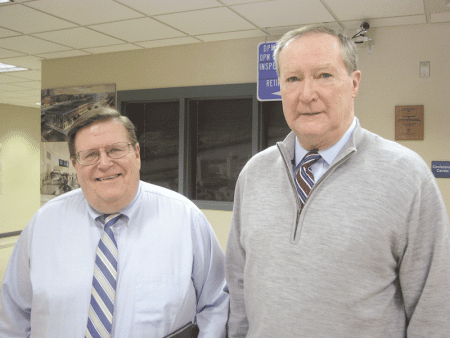

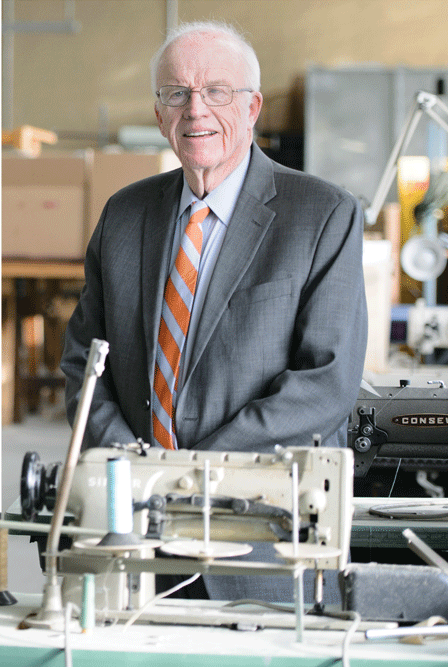
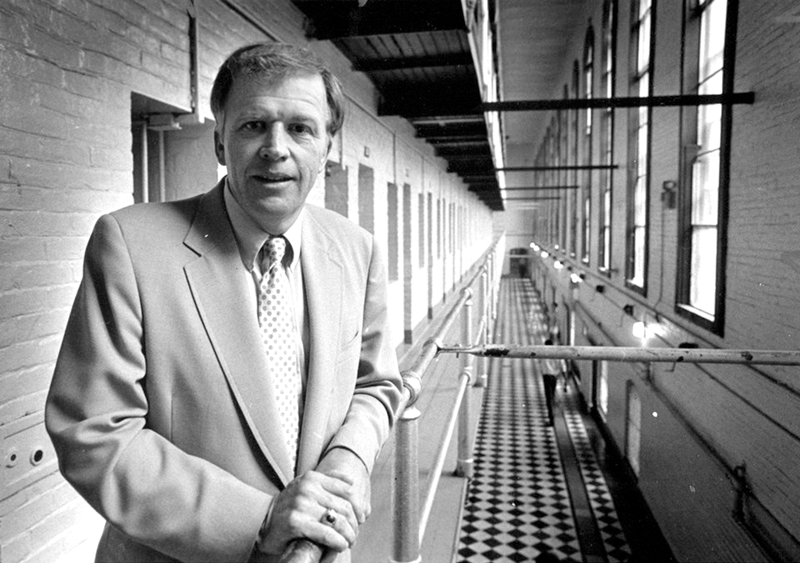
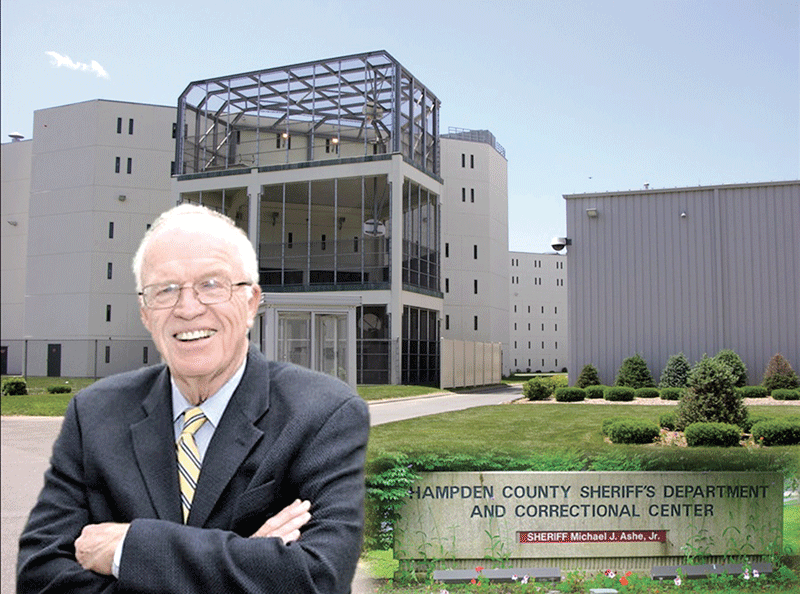
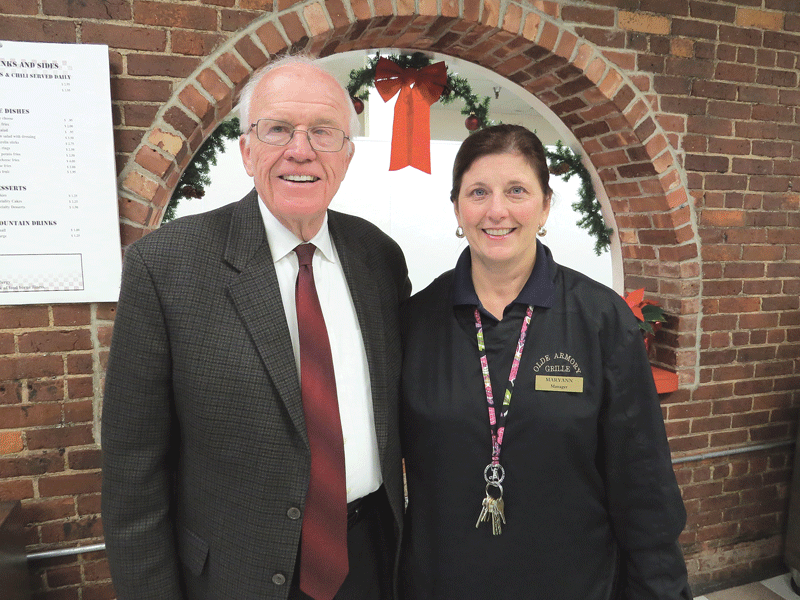




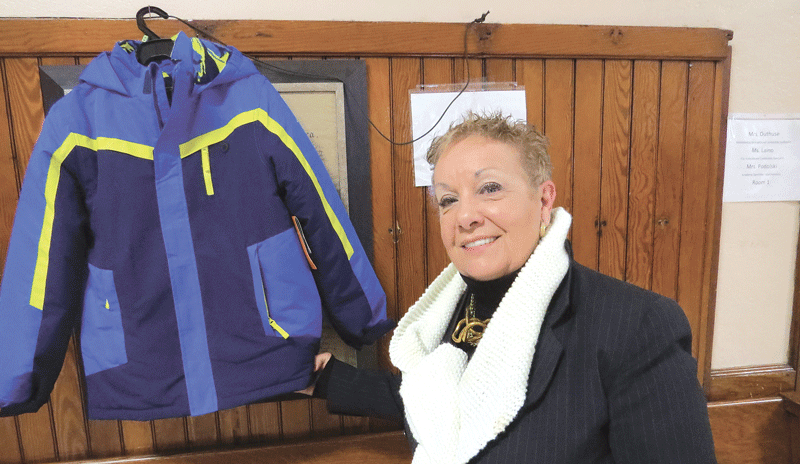
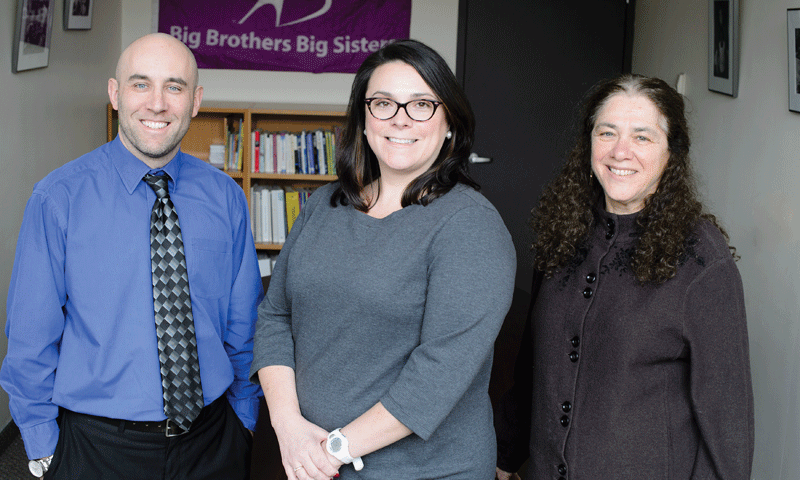
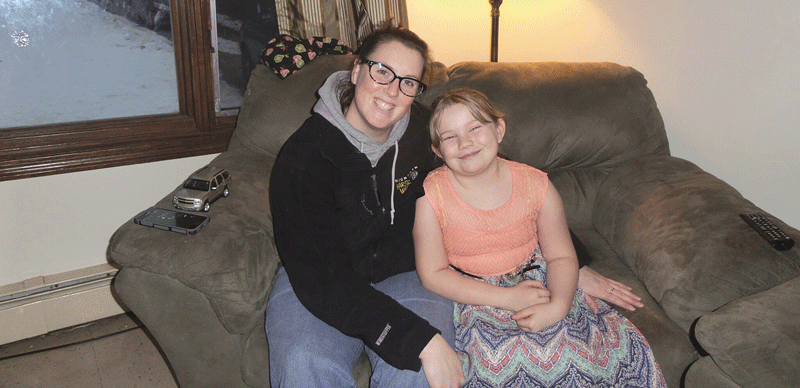



 In rural Franklin County, statistically the most impoverished county in the Commonwealth, for example, basic transportation is an issue, said Danielle Letourneau-Therrien, executive director of that office, noting that, once outside Greenfield, mass transit is hit or miss at best. Meanwhile, reliable Internet service, something most now take for granted in Greater Springfield, is a foreign concept in places like Rowe, Heath, Charlemont, and Ashfield, a fact of life that often makes it difficult to communicate with ‘bigs’ and ‘littles’ alike.
In rural Franklin County, statistically the most impoverished county in the Commonwealth, for example, basic transportation is an issue, said Danielle Letourneau-Therrien, executive director of that office, noting that, once outside Greenfield, mass transit is hit or miss at best. Meanwhile, reliable Internet service, something most now take for granted in Greater Springfield, is a foreign concept in places like Rowe, Heath, Charlemont, and Ashfield, a fact of life that often makes it difficult to communicate with ‘bigs’ and ‘littles’ alike.

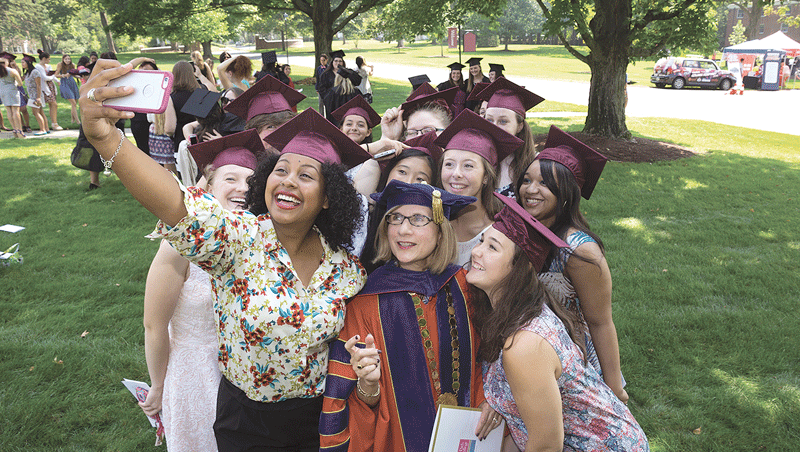
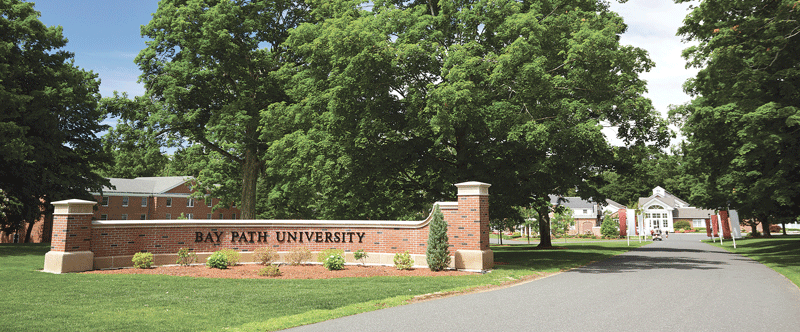
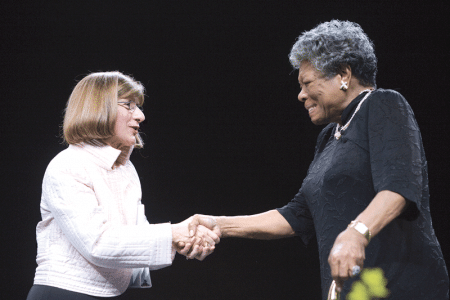
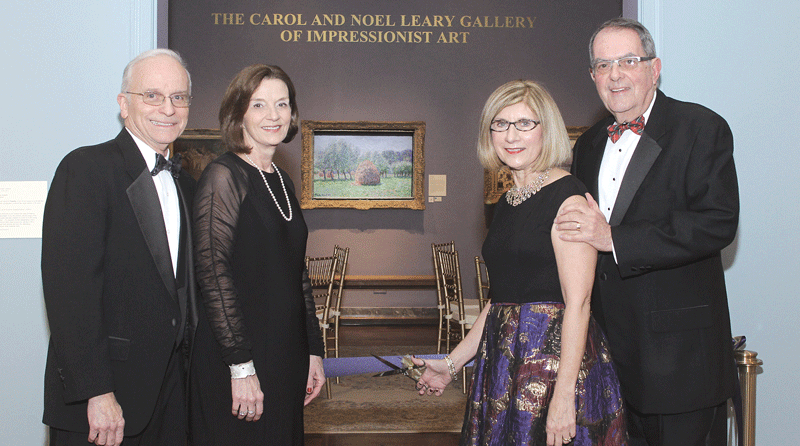

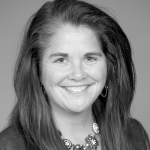




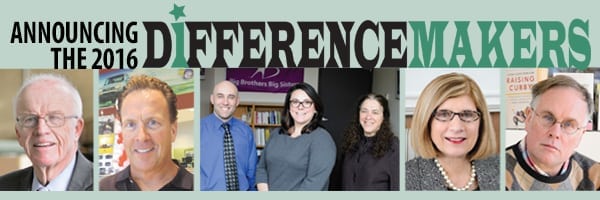











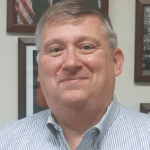
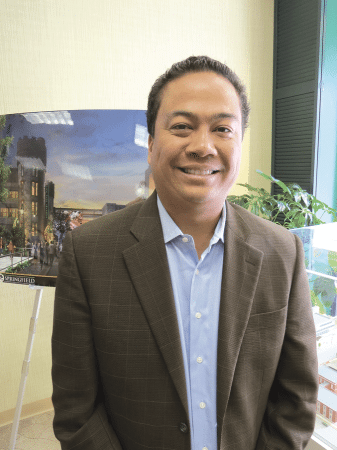



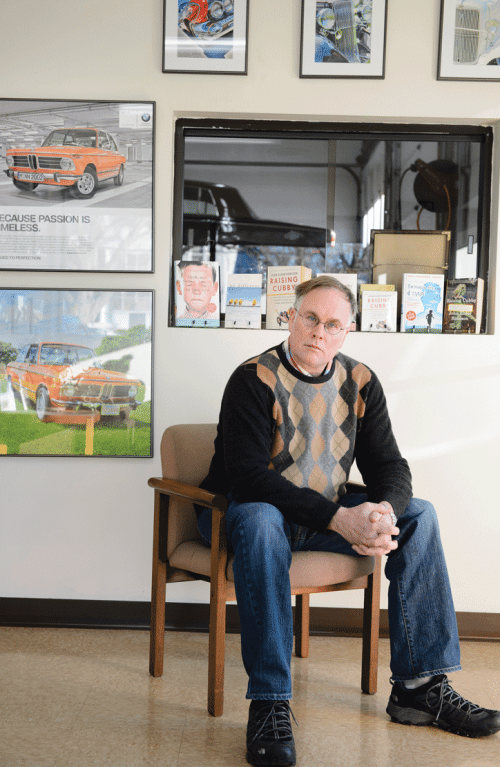


 And as he talked about the process of discovering the cause of his “own differences,” as he called them, Robison used the words ‘empowering’ and ‘liberating’ to describe the phenomenon.
And as he talked about the process of discovering the cause of his “own differences,” as he called them, Robison used the words ‘empowering’ and ‘liberating’ to describe the phenomenon.
